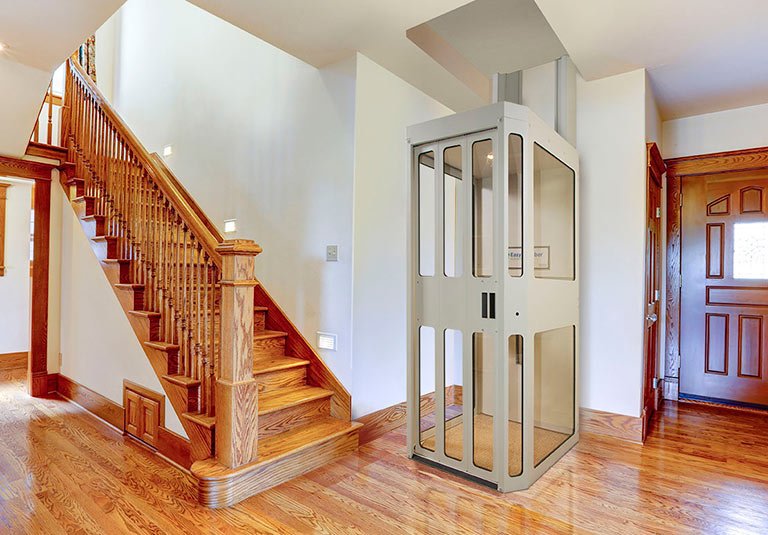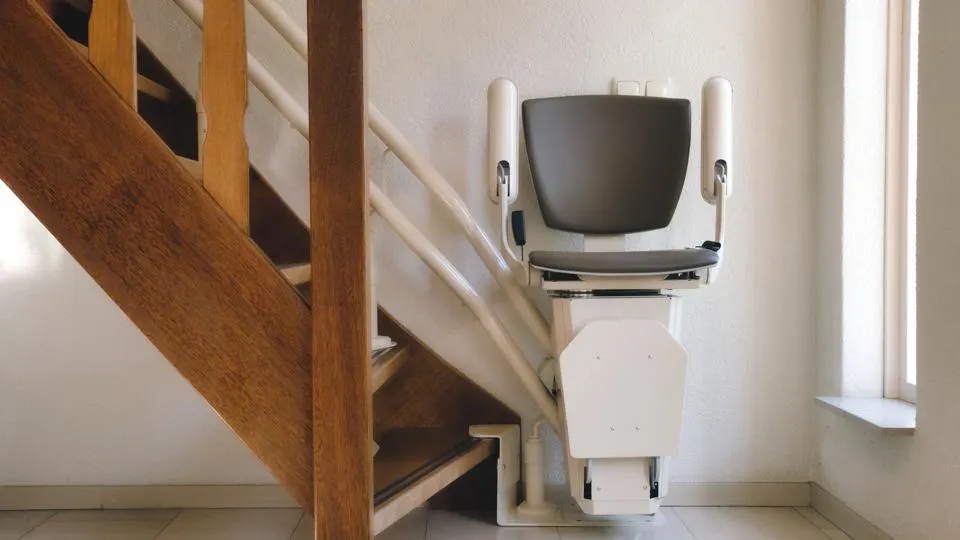Today, upstairs lifts have been made safer through enhanced technology, which any user would prefer rather than using stairs.
Since more people continue to use these lifts at their homes and businesses, it becomes vital to learn their safety features.
Such features guarantee not only the efficient working of the lifts but also the welfare of the passengers.
Enhanced Load Capacity and Weight Sensors
The current stairs lifts have an enhanced load capacity and appreciate the weight sensors, which prevent them from overconsuming their capacity limits.
These sensors limit the movement of the lift if the weight in the lift is more than the permitted capacity to avoid mishaps.
These sensors help give the lift an even weight distribution and notify the users when the weight is too much for the lift to hold, ensuring safety and stability.
Emergency Stop and Alarm Systems
Another important aspect of modern lift facilitation is the emergency stop button, which allows the persons inside to stop the lift in case of an emergency.
These buttons are alpine with alarms that alert the building personnel or the emergency service personnel when pressed, thereby guaranteeing timely intervention.
The alarms can also detect any unusual sound or movement and alert you before an accident occurs.
Backup Power Supply
It is quite normal for people to experience power failure from time to time, but such power cuts do not pose a problem with contemporary lifts.
Emergency lighting, usually in the form of batteries, guarantees that lifts can continue working or revert to stopping at the nearest floor during a power outage.
This feature is relevant, especially in cases when a person can be caught between floors which in multi-storied buildings can be fatal.
Smooth Start and Stop Mechanisms
Smooth starting and stopping features are another feature in today’s lifts that improve passenger comfort and safety.
These features reduce or cushion the motion that is likely to occur, particularly at the start or at the end of a lift’s movement, to decrease the possibility of falls or accidents.
It works in blips of gradual build-up and tapering off, which makes for a smooth ride. This is especially ideal for the elderly or disabled.
Advanced Door Safety Sensors
Lift door safety sensors play a vital role in ensuring that no accidents occur as people move in and out of the lift.
These sensors are mounted in the doorways, and they help the doors realise that somebody or something is in the door and hence do not close.
Placing these sensors means that the more can only close when it is safe to do so. It greatly reduces the likelihood of people getting hurt by the doors.
Automatic Leveling Systems
Automatic levelling makes it easier and safer for passengers to get in and out of the lift as the lift is well-levelled at the floors.
This feature is very relevant to people in wheelchairs and those with impaired mobility since they are protected from potential falling due to inequalities on floors.
Communication Systems
Present-day lifts have facilities that provide a communication link with the outside world. Some of the facilities include calling the emergency services, the building, or the management from within the lift.
These systems help guarantee that assistance in an emergency is easily accessible, thus affording passengers a level of security.
Regular Maintenance and Diagnostic Tools
To enhance efficiency and safety, lifts currently in use are equipped with diagnostic features that monitor their functioning and analyze problems that may potentially arise in the future.
Such diagnostic tools help maintain routine maintenance schedules, which keeps lifts in good shape and safe for use.
Conclusion
Nowadays, the features of the upstairs lifts have improved concerning safety, including adopting different technologies to keep the users secure.
From load sensors to emergency stop, automatic leveling, and communication devices, all of these features sum up to safe, reliable, and comfortable operation.
As years go by, technology will improve, resulting in more safety features being added to lifts to make them more reliable and confidence-inspiring.
Also Read: Should I Buy or Rent a Stairlift?



